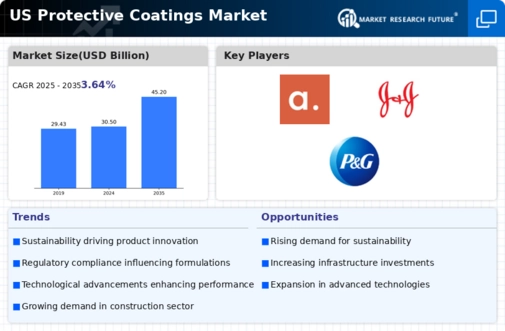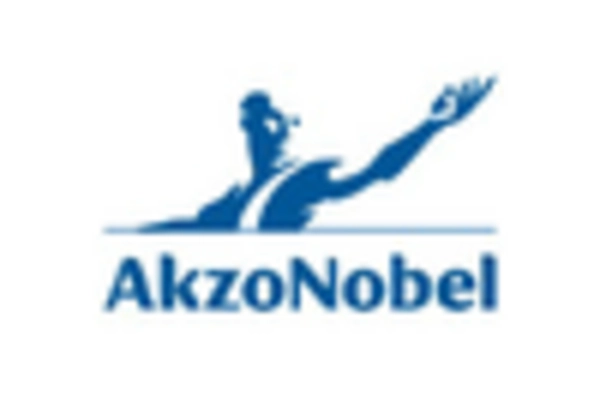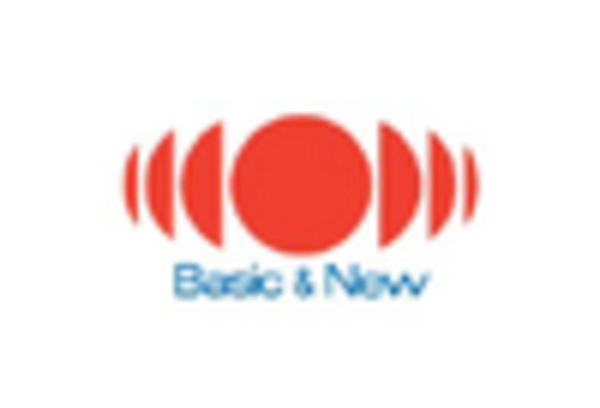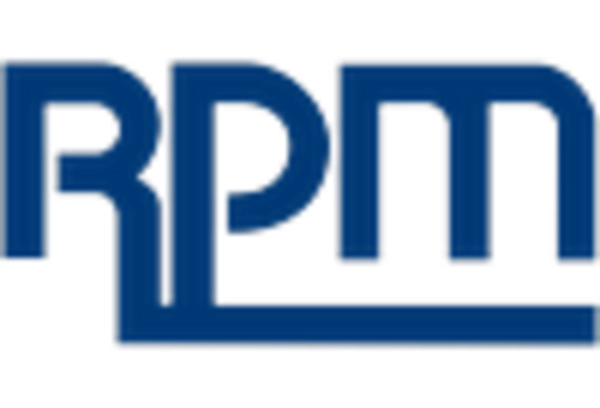Industrial Growth
The growth of various industrial sectors in the United States is likely to propel the protective coatings market. Industries such as automotive, aerospace, and manufacturing are increasingly utilizing protective coatings to enhance the durability and longevity of their products. For instance, the automotive sector is projected to witness a compound annual growth rate (CAGR) of 4.2% over the next few years, which could significantly impact the demand for high-performance coatings. The protective coatings market is expected to capitalize on this trend, as manufacturers seek advanced coatings that provide superior protection against wear and tear, thereby ensuring product reliability and customer satisfaction.
Regulatory Compliance
Regulatory compliance is a significant factor influencing the protective coatings market. The United States has stringent regulations regarding environmental safety and health, which necessitate the use of coatings that meet specific standards. These regulations often mandate the reduction of volatile organic compounds (VOCs) in coatings, pushing manufacturers to innovate and develop eco-friendly products. The protective coatings market is adapting to these changes, with a notable increase in the production of low-VOC and water-based coatings. This shift not only aligns with regulatory requirements but also caters to the growing consumer preference for sustainable products, potentially expanding market opportunities.
Rising Consumer Awareness
Rising consumer awareness regarding the benefits of protective coatings is emerging as a crucial driver for the market. As consumers become more informed about the advantages of using protective coatings, such as enhanced durability and reduced maintenance costs, the demand for these products is likely to increase. The protective coatings market is witnessing a shift in consumer preferences towards high-quality, long-lasting coatings that offer better protection against environmental damage. This trend is further supported by marketing efforts that emphasize the value of investing in protective solutions, potentially leading to a broader acceptance and adoption of these products across various sectors.
Technological Innovations
Technological innovations in the formulation and application of protective coatings are significantly influencing the market landscape. Advances in nanotechnology and smart coatings are enabling the development of products that offer enhanced performance characteristics, such as self-cleaning and anti-corrosive properties. The protective coatings market is likely to benefit from these innovations, as they provide solutions that meet the evolving needs of consumers and industries alike. Furthermore, the integration of automation in the application process is expected to improve efficiency and reduce costs, making high-performance coatings more accessible to a wider range of applications.
Infrastructure Development
The ongoing infrastructure development in the United States appears to be a primary driver for the protective coatings market. With the government investing heavily in public works, including roads, bridges, and buildings, the demand for protective coatings is likely to increase. These coatings are essential for safeguarding structures against environmental factors such as moisture, UV radiation, and corrosion. The protective coatings market is projected to benefit from an estimated growth rate of 5.5% annually, driven by the need for durable and long-lasting solutions in construction projects. As infrastructure projects expand, the requirement for high-performance coatings that can withstand harsh conditions becomes increasingly critical.

















Leave a Comment